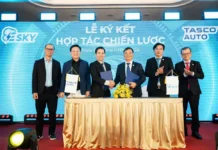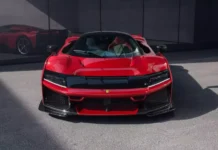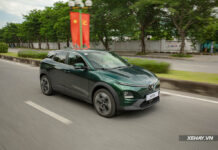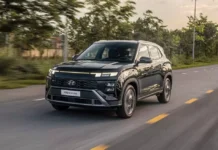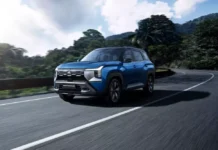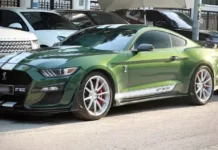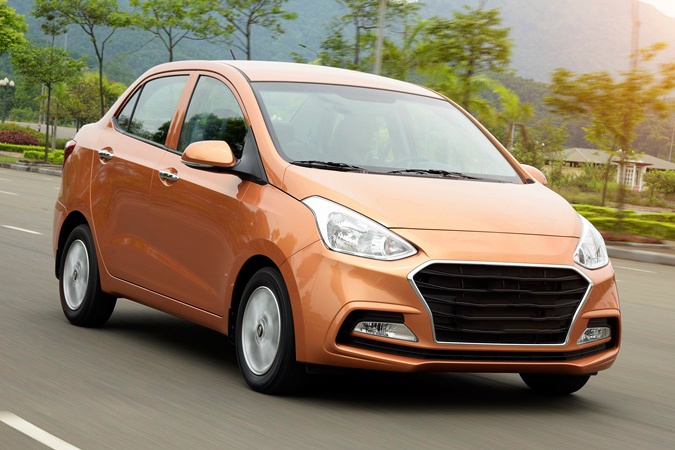
|
The Ministry of Agriculture and Environment has recently released a draft decision by the Prime Minister on the roadmap for the application of national technical regulations on vehicle emissions in Vietnam.
Accordingly, cars produced from before 1999 to 2022 will be subject to different emission standards, from Level 1 to Level 5, depending on the year of production and the locality of registration.
The draft also mentions that cars produced from 2017 and registered in Hanoi and Ho Chi Minh City may be subject to Level 4 standards as early as next year. In other cities, cars produced from 2017 are expected to comply with Level 3 emission standards from January 1, 2026.
How “old” are the 2017-produced cars?
According to Decree 166/2024 and Circular 53/2024, the lifespan of four-wheel passenger cars with engines (including cars with less than nine seats) shall not exceed 15 years from the year of production.
Thus, the 2017 models have now aged eight years, or more than half of their lifespan. With a considerable amount of time left in their lifespan, most of these vehicles can also meet the expected emission standards that will take effect from the beginning of next year according to the draft content.
| |
According to Decision 49/2011 of the Prime Minister, newly-produced, assembled, and imported cars in Vietnam must ensure Euro 4 standards from the beginning of 2017.
From January 1, 2022, the emission standard that cars need to meet according to this Decision is Level 5, equivalent to Euro 5.
This regulation is likely part of the reason why the new Honda Brio, despite its launch in Indonesia in 2023, may not have the opportunity to return to the Vietnamese market, as was the case with the Toyota Wigo.
At that time, the engine of the 2023 Honda Brio introduced to Indonesian customers only met the Euro 4 emission standard, no different from the model previously sold in Vietnam.
| |
Although the draft released by the Ministry of Agriculture and Environment does not specifically mention how to determine the new emission standards, it is likely that the emission levels from Level 1 to Level 5 to be implemented will be equivalent to Euro 1 to Euro 5, similar to the determination used in Decision 49/2011.
Thus, almost all 2017-produced cars in Vietnam will meet the Level 4 emission standard according to the new Decision, expected to take effect from the beginning of next year for cars registered in Hanoi and Ho Chi Minh City.
This is because these vehicles have actually had to comply with Level 4/Euro 4 emission standards since 2017 according to Decision 49/2011 as mentioned above.
| Year of Production | Registered in Hanoi or Ho Chi Minh City | Registered in Other Provinces/Cities | ||
| Emission Standard Level | Time of Application | Emission Standard Level | Time of Application | |
| Before 1999 | Level 1 | When the Decision takes effect | Level 1 | When the Decision takes effect |
| From 1999 | Level 2 | When the Decision takes effect | Level 2 | When the Decision takes effect |
| From 2017 | Level 4 | 1/1/2026 | Level 3 | 1/1/2026 |
| From 2022 | Level 5 | 1/1/2027 | Level 4 | 1/1/2026 |
| Level 5 | 1/1/2028 | |||
| According to the draft Decision of the Prime Minister on the roadmap for the application of national technical regulations on vehicle emissions in Vietnam. |
In a discussion with Tri Thức – Znews, Mr. Duc Phuc, a representative of Thien Moc Auto, a used car dealership in Hanoi, shared his opinion that most owners of cars produced from 2017 onwards should not be overly concerned.
“The majority of these older vehicles in use meet the emission standards proposed by the Ministry of Agriculture and Environment,” he said. “These cars had to meet certain standards to be granted import or production permits in previous years. All that customers need to do is regular maintenance to ensure they meet the emission standards,” added Mr. Phuc.
Which Emission Standards Are Used in Other Countries?
Before the new Decision is passed and takes effect, let’s consider the Level 3, Level 4, and Level 5 emission standards currently applied in Vietnam as equivalent to Euro 3, Euro 4, and Euro 5, respectively, as stated in Article 3 of Decision 49/2011 by the Prime Minister.
Compared to other countries, the emission standards applied in Vietnam are still relatively lenient. As of now, most major automotive markets have adopted Euro 6 or equivalent emission standards for internal combustion engine vehicles in circulation.
In Europe, gasoline and diesel cars registered since September 1, 2014, have had to comply with Euro 6b emission standards. The latest version of this standard, Euro 6e, came into force in September 2024.
| |
In the US, light-duty vehicles registered since 2017 must meet the Tier 3 emission standards set by the Environmental Protection Agency (EPA). In the state of California, transportation vehicles are subject to more stringent emission requirements than the EPA’s Tier 3 standards since 2015.
In China, the China 6a emission standard has been mandatory for all light-duty gasoline vehicles since January 2021. Starting July 2023, the China 6b regulation tightens the emission limits and requires vehicles to undergo real-world testing and on-board diagnostics. Essentially, the emission standard for gasoline-powered vehicles in China is equivalent to Euro 6 in Europe. The Tier 3 emission standard set by the EPA for the US market is considered more stringent than Euro 6e in terms of emission limits.
Interesting Books for Your Car Journey
The ‘Xe’ category suggests interesting books with captivating topics. During your car trips, these books can be your delightful companions when you take a break and relax.






